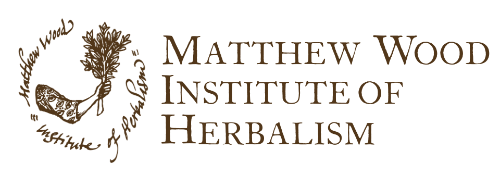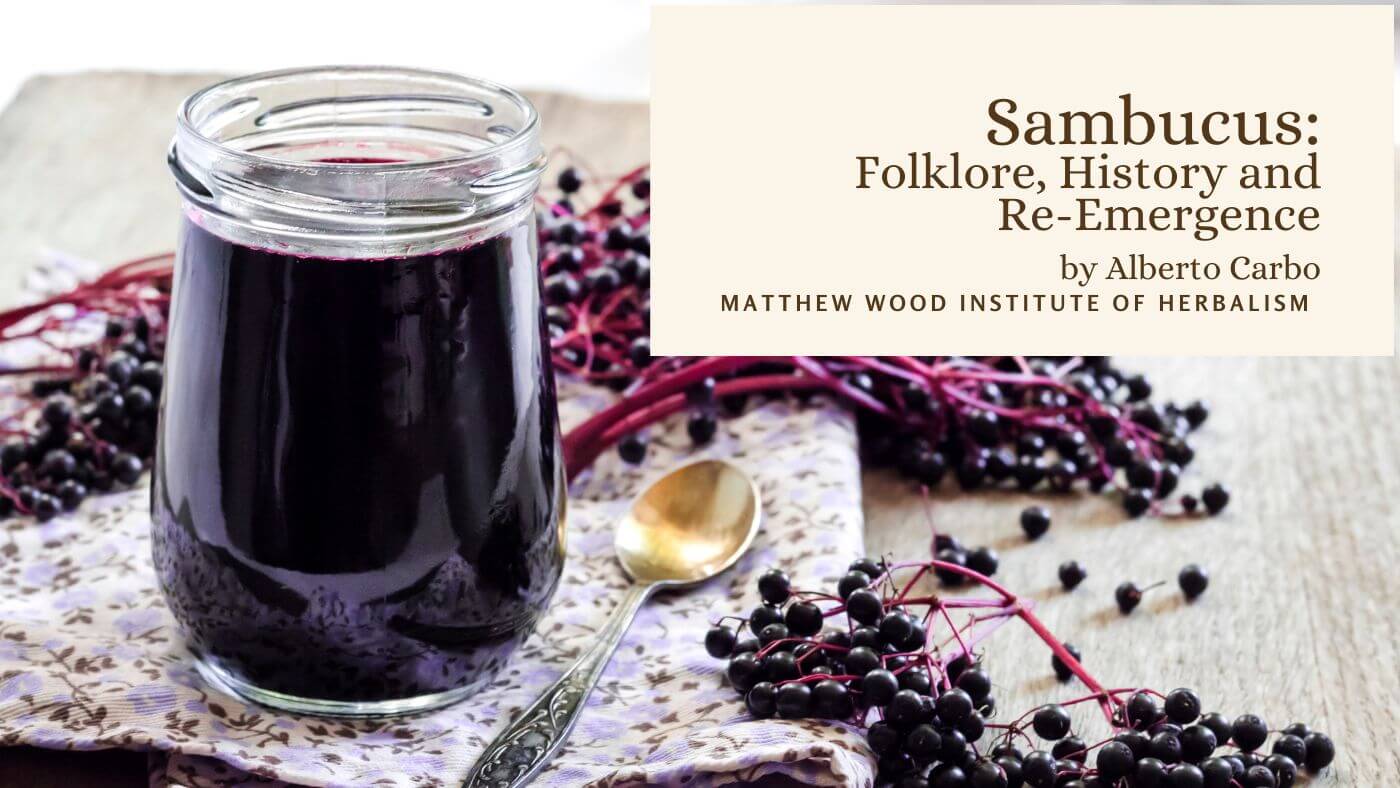Jump to Recipe
Elderberry has become quite popular in the last 3 years, and for good reason. Many have flocked to their local health food stores in search of an Elderberry product to help support them through a time of worry and concern at the prospect of potential illness.
It is interesting to note that Elder, and Elderberry in particular, made a resurgence as a plant ally, during the emergence of a dangerous, and in many cases fatal virus. While many of those who turned to Elder during these trying times may not be aware, Elder has long been revered/feared in many cultures as a gatekeeper of the underworld. It is peculiar, and almost uncanny, that we turned to Elder during a dark time of uncertainty and fear.
Throughout history, Elder has long been hailed as a powerful plant ally. The oldest written records seem to be those of the ‘Father of Medicine’ himself - Hippocrates, who referred to Sambuca as his ‘medicine chest’ in 400 BCE. Later, in the largest compiled text of botanical knowledge from the ancient world, Dioscorides mentions Elder in ‘De Materia Medica’ and refers to the soft pith, which can easily be pushed out, leaving hollow reeds.
Gaius Plinius Secundus, better known as Pliny the Elder, refers to Elder as Sambucus, an adaptation from its Greek predecessor sambuca, which is said to have been derived from the root word Sackbut – an ancient stringed musical instrument. Although Pliny does mention that horns and sound pipes were also made from sambucus.
It is said, that one of the oldest gods in Greek mythology himself, Pan – the god of the countryside, pastures, and forests, portrayed as half-man, half-goat had a special relationship with Elder. After falling in love with the nymph Syrinx, who did not return his feelings, he pursued her relentlessly through forests, mountains, valleys, and meadows. When she had grown tired, and could no longer evade him, Syrinx ran to the river’s edge and asked her father and sisters for help. Just as Pan was about to wrap his arms around her, she disappeared, transforming into wild reeds.
Pan broke the reeds into pieces in a love-drunk rage, and moments later, a strong wind began to blow, emitting a sound resembling the sweet melodious voice of Syrinx herself. Pan collected some of the pieces and joined them with wax and thread – known from that way forward as a Pan flute. There is something to be said about the association of music with the Elder, since even in the modern day, Italian peasants make simple pipes called sampogna, from the hollowed-out Elder stems.
While the written records, and even the association to Pan are old, its use certainly dates back further. Proof of cultivation of Elder has been found in archaeological sites dated to the stone and bronze ages (3-4,000, BCE) in Italy and Switzerland.
Throughout the ages, Elder continued to be revered and used as medicine. In Latvia, they believe that the Elder represented the spirit of Puškaitis – Elder God, and offered gifts of bread and beer. In Norse folklore, the Hyldemoer or Elder Mother, was the spirit of the Elder, and was believed to be one with the tree, living in it, protecting it from harm, and even vengeful if cut down. In Celtic culture, the Elder Mother was associated with the Elder and cherished. It was of such importance to the Celts, that it is one of the 22 trees in the Celtic tree alphabet – Ogham. For a long time, cutting Elder down was forbidden in Ireland.
While the botanical name Sambucus, reminds us of music and ancient gods, the common name, Elder, is derived from the Anglo-Saxon word aeld, meaning ‘fire’, and references the use of the hollow stems of young branches as implements to blow on a fire.
Across the great waters, in the Americas, use of Elder dates at least as far back as 1300 – 1000 BCE. The American species, Sambucus canadensis, is interchangeable with Sambucus nigra, and abundant in the Eastern areas of North America.
The Eclectics physicians recognized the benefits of Elder, and wrote about its medicinal applications. Finley Ellingwood, M.D., Harvey Wickes Felter, M.D., and John Uri Lloyd, Phr. M., Ph. D. all wrote about its clinical applications.
Although most are aware of the use of Elderflower as a diaphoretic when prepared as a hot infusion, to aid in feverish conditions, the eclectics had another use, not as commonly known today. Preparing the flowers as a cold infusion, serves as a diuretic alterative, for use in cases of what was then referred to as dropsy, known today as oedema, as well as renal sand (stones). While herbalists today still use the Elderflowers, in modern times, and especially since 2020 popular focus has been primarily on the medicinal prowess of the Elderberry.
Elderberry boosts cytokine production, thereby helping to regulate immune response, while at the same time, being an effective viral inhibitor. The anthocyanins in these black berries help to lower LDL cholesterol, and atherosclerosis, while at the same time being rich in antioxidants. The berries also have quercetin, and vitamin C which likely contribute to the therapeutic effect. Elderberry is also nutritive and has been known to help with anemia, as well as with bone health, by inhibiting bone resorption and stimulating bone formation.
Every autumn, I am appreciative of the fruits of this plant-being. While there are many preparations one could make with Elderberries, one of my favorites, is Elderberry syrup. As soon as the weather begins to cool, stripping foliage from branches, I prepare my first batch, and a second, before I run out – all throughout the winter and into spring. From my personal experience, I find that it certainly helps in preventing colds/flus and even when I manage to catch a cold anyway, recovery seems to be quicker.
There are many ways to prepare Elderberry syrup, and I have changed my recipe several times. Experimenting with different recipes is encouraged, and a way to find what you like the most.
This is kid-friendly recipe. My kids, as well as many friends and family’s kids love this recipe, and hopefully your kids will as well.
While I tried making elderberry syrup with only the berries at first, I soon realized that adding some other herbs, not only improved the flavor but also the medicinal effect. Ginger, cinnamon, and cloves are all warming and stimulating to the system and thyme is an effective expectorant, stimulating the release, and expulsion of mucus. In the past, I have experimented with hyssop, rather than thyme, and while the therapeutic effects did not seem to change too much, children did not always appreciate under tone of the hyssop.
I also use elderberries in syrup for other purposes, such as:
- Anemia, combined with Yellow Dock root, Shatavari, Hibiscus, and prepared with molasses, instead of honey.
- Digestive Aid syrup with Burdock, Fennel seed, and Sage
- Soothing Nervine Syrup is a great addition to tea and beverages. You can make it with all, or a combination of a couple herbs like Lemon Balm, Linden, Catnip.
- You can also make a decoction of the berries, and then allow it to cool. This combines great with a cold infusion of Marshmallow leaves and Marshmallow root for raspy, lingering coughs and the mucosa of the digestive tract.
Elderberry Syrup


